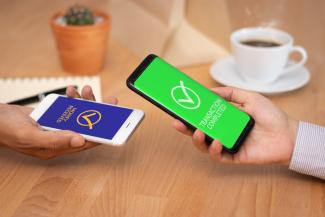When was the last time you wrote a paper cheque? My records don’t go back that far, but I know it was well over a decade ago.
I ditched my cheque book many years ago, once it became clear I was paying for something I’d never use again.
I don’t regret that decision. I’ve never dealt with a tradesman since who didn’t accept and expect payment by EFT.
Cash was once king for small retail payments, but no longer. COVID-related hygiene concerns have accelerated the trend towards contactless payment methods. I think every retail purchase I’ve made in the past year has been by credit card. Except for one.
The exception? A few months ago I purchased a $10 meal from a food truck at a microbrewery.
They didn’t take cash, which isn’t so unusual these days, but they also had no POS terminal, and didn’t accept credit cards. That was a shock to me.
Welcome to the world of ID-based payments
The only way to pay that food vendor was using something called PayID, which involved entering their mobile phone number into the banking app on my smartphone. I didn't even know I could do that, but I did, and it was dead easy.
There are variants of this popping up in many countries, e.g.:
- In Australia, it’s called PayID
- In Canada, it’s Interac e-Transfer
- In Singapore, it’s PayNow
- In Malaysia, look for DuitNow
Historically, transferring funds to someone meant knowing their bank account details. Makes sense, but could you recite your BSB and account number off the top of your head? Probably not, but I bet you know your phone number or email address. (For a business, their registered business number could double as a payment ID.)
Flexible forms of ID might be the headline act, but they are just the tip of the iceberg.
Sitting below the surface will be a whole new payment system. Additional benefits are likely to include things like:
- Speed - real-time funds transfer
- Transparency & security - the payee’s identity is displayed before you submit the payment
- Better documentation – support for much more detailed transaction descriptions
That all sounds very appealing to me. You’ll know what I mean if you’ve ever done a large transfer via EFT, checked, double-checked and triple-checked that you’ve typed in the recipient’s account number correctly, then waited hours or days for confirmation that the funds have arrived safely.
And think of the advantages for a small retailer or service provider, especially a mobile one. No need to purchase payment hardware, and they can confirm that the payment has been completed immediately, before leaving the premises or serving the next customer.
Orchid EFT Processing comes to the party
As banks come on board with these new payment methods, their EFT file formats have been changing to allow for new Payee ID types. Here at Orchid, we’ve been making sure our EFT Processing module supports the new bank formats as soon as changes are brought to our attention.
But wait, there’s more
Changes to these payment systems aren’t just about making bank accounts easier to identify. They also have the potential to bypass bank accounts altogether. For example, making payments between digital e-wallets, linked to mobile phones, in markets where not everyone has access to traditional banking services.
Search online for information about ID-based payments, and you might be rapidly sucked into a rabbit-hole of articles around Digital IDs. Those spruiking the benefits are often large consulting firms, presumably with something to gain. Others ring alarm bells about potential privacy and security implications.
What seems pretty certain is that changes are coming not just to the way we identify our bank accounts, but to the very ways that we, and more importantly others, identify ourselves.
Be afraid or be excited, the choice is yours!

